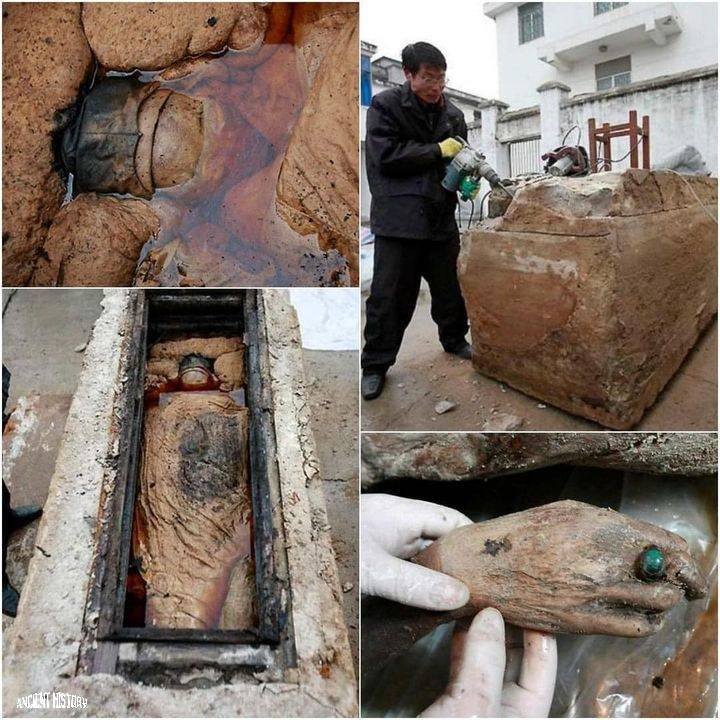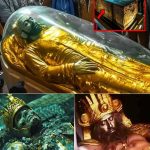The Ming Dynasty Coffin of Jiangsu: A Window Into Imperial China

In 2011, archaeologists working in Jiangsu Province, China, uncovered a discovery so extraordinary that it continues to fascinate historians and the public alike. Hidden beneath layers of earth was a stone coffin dating back 400–500 years, preserved from the Ming Dynasty (1368–1644). When opened, the coffin revealed a body submerged in a mysterious brown liquid, dressed in luxurious silk garments and adorned with jade rings and intricate jewelry. This rare find not only stunned the archaeological community but also provided a direct window into the burial practices and artistry of late imperial China.
A Rare Case of Preservation

Preservation of human remains from the Ming Dynasty is exceptionally uncommon. Unlike earlier dynasties such as the Han, where elaborate tombs sometimes protected bodies for centuries, most Ming burials have not survived the ravages of time. The Jiangsu coffin, however, presented an astonishingly well-preserved body, its features still recognizable after nearly half a millennium.
Scientists believe the preservation may be linked to the airtight coffin construction, combined with the mysterious brown liquid that may have formed naturally or been intentionally added as part of the burial ritual. This liquid prevented bacteria and oxygen from decaying the body, essentially creating an accidental time capsule.
Symbols of Status and Wealth
The garments and jewelry discovered within the coffin speak volumes about the individual’s high status. Silk robes, still vibrant despite centuries underground, reflect the importance of fashion and craftsmanship in Ming society. Jade rings and other fine ornaments not only highlight the wealth of the deceased but also the symbolic power of jade in Chinese culture, where it represented purity, protection, and immortality.
These adornments confirm that the individual was likely a member of the local elite, perhaps an official or a person of noble lineage. The richness of the burial emphasizes the Ming Dynasty’s elaborate funerary traditions, where the dead were honored with objects meant to ensure comfort and dignity in the afterlife.

Insights Into Ming Dynasty Funerary Practices
The Jiangsu coffin provides crucial insight into Ming funerary customs, blending Confucian, Taoist, and Buddhist influences. The use of jade and silk reflects both material wealth and spiritual belief, while the elaborate stone coffin design illustrates the period’s architectural ingenuity.
Additionally, the burial demonstrates the Ming emphasis on honoring ancestors. By preserving the body with great care and providing treasures for the afterlife, the living ensured the continued protection and blessing of their forebears.
A Bridge Between Past and Present
Beyond its archaeological value, the discovery resonates deeply as a human story. To gaze upon garments, jewelry, and even the preserved face of someone who lived half a millennium ago is to stand directly in the presence of history. The coffin of Jiangsu is not just a relic—it is a bridge between the world of the Ming Dynasty and our own.
Conclusion
The Ming Dynasty coffin of Jiangsu is one of the most remarkable archaeological finds of modern China. With its preserved body, silk garments, and jade adornments, it offers an unparalleled glimpse into the elegance, wealth, and spirituality of late imperial China. More than a scientific discovery, it is a reminder of the timeless human desire for remembrance, legacy, and immortality.











